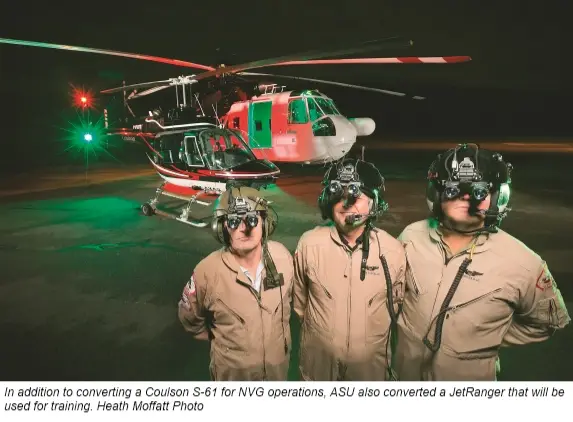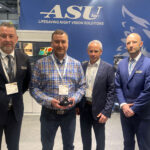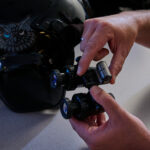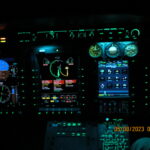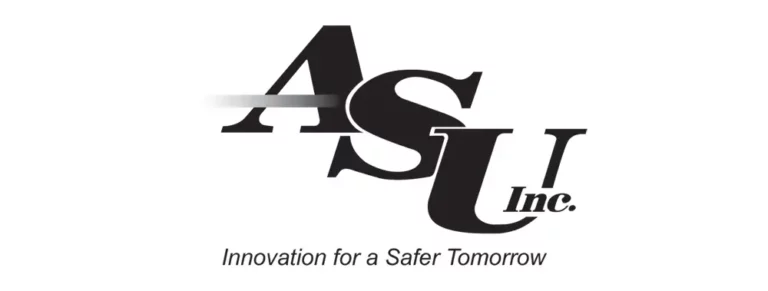Only one thing can predictably calm the temper of an entire raging forest fire in a matter of hours: night. When the temperature drops, the wind dies down and humidity levels rise, the growth rate of even the most determined inferno is significantly reduced. What better time to try and exercise control over the blaze?
This is the question that Wayne Coulson, president of Coulson Aircrane Ltd., plans to answer with a Sikorsky S-61 that has recently been converted by Aviation Specialties Unlimited (ASU ) to allow for the use of night vision goggles (NVGs).
Well known for its heli-logging, Coulson Aircrane, based on Vancouver Island, B.C., has also been offering aerial firefighting services for decades. the company operates a fleet of three Bell 206B JetRangers, four S-61s and one Sikorsky S-76B. Coulson also owns Flying Tankers that operates the Martin Mars, the largest seaplane in the world carrying 7,200 gallons of water, which has operated in Mexico, California and Western Canada.
Due to its added difficulty, inherent risks and strict regulations, nighttime aerial firefighting has not been an inviting prospect for commercial operators. That’s despite the fact that fire agencies, including the Los Angeles County Fire Department and Los Angeles City Fire Department, have been fighting fires at night for years (see p.87, Vertical, Feb-Mar 2012). But thanks to technology, it is gaining interest within the commercial sector. Aware of those risks, and keeping to the company motto, “you can’t manage what you can’t measure,” Coulson took to the skies with its S-76B Fire Watch ship over the past year to research the advantages to and strategies for fighting fires at night.
The S-76B is equipped with an Axsys Technologies V9 multi-sensor camera system and infrared imager paired with an AeroComputers mapping system (see p.68, Vertical, Feb-Mar 2010 ). With it, Coulson found that not only is the growth rate of a fire a fraction of what it is during the day, but that water and gel suppressants are much more effective at night. The research gave Coulson a better idea of fire’s behavior at night, but also a better understanding of the challenges that arise when fighting it with the S-61.
“Under NVGs, you can see fire, you can see flames, you can see hot spots,” said Coulson. “The problem is when the fire is jumping ahead . . . the embers can float 20 kilometers. So, although you’re working the fire line, the fire is running much further ahead of you and you don’t know it.”
This is where the S-76B comes in — it can see the embers and target hot spots with a laser illuminator, which, under NVGs, shows up as a pool of light the size of a small car on which the tank-equipped S-61 can make a precision drop. This method was developed at Coulson’s base in Port Alberni, B.C., and Coulson is confident that the concept will prove itself in the field.
Coulson turned to Boise, Idaho-based ASU to carry out the cockpit conversion on the S-61 as well as one of the JetRangers that will be used for training. It recently received Federal Aviation Administration and Transport Canada certification for its conversion on the S-61, the first commercial model to be converted. ASU president Mike Atwood feels that nighttime aerial firefighting is gaining momentum in the commercial market. “The U.S. Forest Service is awarding a contract for a Type II helicopter that is equipped for fighting fire at night in 2013. This is something that is not going to go away,” said Atwood. “This is something that is going to be examined very closely. . . . Why should you fight fire just during the daytime, when you can also fight it at night when conditions are best for attacking the fires?”
Atwood believes that there will be an increase in the number of companies that will be looking to fight fire at night, to the point that ASU plans on offering NVG firefighting training in Boise on its JetRanger that will be fitted with a 125-gallon belly tank.
And Coulson couldn’t agree more when it comes to nighttime operations, as long as it is done using the best that technology has to offer, and training. Coulson recently sent two of his S-61s, including the recently converted aircraft, to Australia, where the company has a contract with the National Aerial Firefighting Centre, in Melbourne, over the 2012-2013 fire season. He plans on demonstrating his new capabilities to officials there. “We do not have a contract to fight fire at night in Australia, but, we will be demonstrating the capability of our multi-mission aircraft.”
In addition to modifications carried out by ASU, Coulson has equipped the S-61 with a Goodrich hoist and medevac interior, the same used in the Los Angeles County Sheriff’s Department Aero Bureau’s SH -3 Sea Kings. The primary motivation for this, according to Coulson, is value. “The customer pays us a lot of money a day to be on site,” he said. “So, it’s really up to us as an industry to work towards solutions for them that are cost-effective that go beyond just fighting fire during daylight hours. And we believe that a multi-purpose ship with NVIS NVIS [night vision imaging system] cockpit gives us another 30 to 50 percent of the day of availability for the customer, whether they want to fight fire with it, whether they want to hoist with it, or they want to do medevacs.”
Coulson plans on going a step further in 2013 when he will add a multi-sensor camera to the S-61 to aid with situational awareness at night, and during the day. He plans to make the S-76B NVG-compatible as well. “The S-76B will be a significant player, working with the S-61, as we look to the safest night NVG program possible,” said Coulson. “And along with safety, comes productivity.”
Coulson is not about to turn his back on the helilogging sector either. He plans on demonstrating the ability to safely log at night with the use of NVGs.
“We’re talking to Transport Canada about it and that may become our training world,” he said, “training pilots by doing some flying at night and working with a grapple.”
When the aircraft returns from Australia, Coulson plans on demonstrating its new capabilities with the multi-mission S-61 to provincial and state fire agencies.
“We really honestly believe that, in the next few years, NVGs will be a very significant part of the firefighting industry, which they aren’t now,” said Coulson. “And we believe, based on what we’ve seen with fire laying down at night, that our best opportunity to kill a fire is during the night, as opposed to during the day.”


